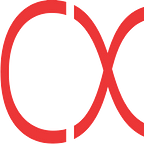This will be all you need to understand the fundaments of quantum computing!
Intro to Quantum Computing
A painless introduction to quantum computing.
Quantum computing uses quantum effects to calculate the results of some functions far faster than an ordinary (classical) computer can. Classical computers use binary as the fundamental of computing because of using a transistor as the computing unit, so it only has two states 0 or 1, which is known as a bit. The more transistors, the more information you can process.
Like the classical computer, the quantum computing unit is called a qubit (quantum bit). A qubit can represent an infinite number of states in principle. That’s because the state vector can point in any direction in a three-dimensional space (usually called the Bloch sphere).
However, measurement of a qubit yields one of only two possible outcomes, just like a regular bit. Quantum computer stores a linear superposition of those states, where the classical computer can only store one of those states at a time [1].
What can Quantum Computing do?
A most direct example can be illustrated by Solving a maze with a quantum computer[2]. If you are using a classical computer to solve a maze by store one state of information at a time, you will have to solve it by trying each possible outlet until you reach the end. For quantum computers, because it can store all the information state, you can try all the paths at the same time and find the solution instantaneously. Too good to be true?
Real-life Applications
Financial application. Maximize investment return by finding the best optimal portfolio. For example, the dynamic stochastic problem can be solved by quantum computing. Another application is for cryptography that quantum computing can be used to encryption, generate keys. Normal encryption function could be Large Integer Factorization (LIF), which uses private keys and public keys. In order to verify authentication, there’s a special function, or LIF, is needed to map between the private and public keys.
In this case, the public key could be the product of the two largest prime numbers in the private key. This function of encryption is so difficult for classical computers to crack, aka, given a public key, and calculate it’s corresponding private key. Popular security technologies that originated from this technology are TLS, RSA, and blockchain. Classical computers will have to use brute force to run each of the possible combinations at a time, but quantum computers have the potential to search through these combinations much faster.
Simulating drug reactions. Since most of the drug's interactions in the human bodies are at the molecule level, it is suitable for a quantum computer to study the quantum mechanics behind these reactions. Richard Feynman in his Simulating Physics with Computers already asked the question about whether a quantum system can be simulated by a classical universal computer, and the answer is no. This is because of the so-called hidden-variable problem: “it is impossible to represent the results of quantum mechanics with a classical universal device.” Therefore, it is almost impossible to simulate a drug interaction at the quantum level using a classical computer, let along with those many layers of side-effect discoveries in clinical trials. But a quantum computer might be able to achieve this simulation. If this is true the discovery and development of the drugs will be dramatically sped up.
Trending AI Articles:
1. MS or Startup Job — Which way to go to build a career in Deep Learning?
2. TOP 100 medium articles related with Artificial Intelligence
3. Neural networks for algorithmic trading. Multimodal and multitask deep learning
4. Back-Propagation is very simple. Who made it Complicated ?
State-of-the-art for Quantum Computing
In order to build a quantum computer, we need to have quantum states of the qubit. Right now four types of technologies can be used to “represent” qubit:
- Superconducting: Google announced a 72-bit qubit chip, IBM offers cloud computing with its 50-bit qubit
- Topological: Microsoft
- Spin-state: Intel
- Light polarization
Microsoft Quantum Development Kit (QDK)
The easiest and simplest way to start your quantum computing journey is using Microsft (MS) Quantum Development Kit (QDK). MS QDK includes Q#, Quantum Simulator, and Katas. The best way to install QDK is to go to the Visual Studio Marketplace and search for it, download the installation app.
Conclusion
This article introduced the foundation of quantum computing. It also provided real-life user cases and some resources.
Reference
[1] https://www.quora.com/How-many-states-can-a-qubit-have
[2] https://arxiv.org/pdf/quant-ph/0304146.pdf
